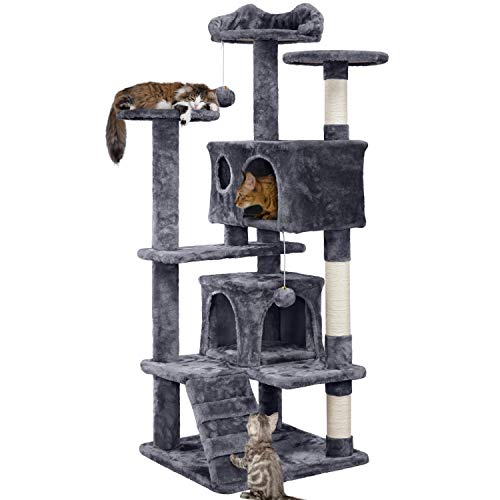What is a cat tree?
A cat tree is a furniture item specifically designed for cats to climb, scratch, and play on. It usually consists of multiple levels, scratching posts, and toys, allowing cats to engage in their natural behaviors in a safe and comfortable environment.
Why do cats need a cat tree?
Cats are active creatures that require regular exercise and stimulation. Having a cat tree provides them with an outlet to climb, jump, scratch, and play. They also serve as a great way to provide a vertical retreat for cats, allowing them to feel safe and secure in their environment.
What is the weight limit for a cat tree?
The weight limit for a cat tree varies depending on its design, materials, and construction. Most cat trees have a weight limit of 15-20 pounds per level, with larger and sturdier models capable of supporting up to 30-40 pounds per level. It’s essential to check the weight limit of the cat tree you’re purchasing to ensure it can support your cat’s weight.
What factors should you consider when buying a cat tree?
When buying a cat tree, consider your cat’s size, age, personality, and activity level. A larger or more active cat may require a sturdier and more substantial cat tree, while a smaller or less active cat may be fine with a smaller model. Look for a cat tree with multiple levels and scratching posts to provide your cat with plenty of space to climb, scratch, and play. Additionally, if you have multiple cats or a kitten, you may need to purchase a larger cat tree to accommodate their needs.
What are some popular cat tree brands?
There are many popular cat tree brands available, including PetFusion, Armarkat, FEANDREA, and Go Pet Club. Each brand offers a variety of cat trees with different features, materials, and designs to suit your cat’s needs and your home decor. When choosing a cat tree brand, consider the durability and quality of the materials used, as well as customer reviews and ratings.






